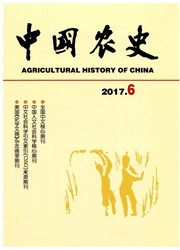

 中文摘要:
中文摘要:
三角淀位于北运河、永定河、凤河等河流交汇的位置。元代三角淀开始形成;明代中期至清初,是三角淀的盛涨时期;清代中期,清廷对永定河下游筑堤束水,导致三角淀逐渐淤废。至民国年间,三角淀已经失去蓄洪沉沙的作用。三角淀的形成与消失的过程,是人与自然相互作用影响的经典历程。三角淀作为区域发展与开发自然过程中的一个焦点,它不仅在中国水利史上,而且在当今生态涵养修复的实践中,都拥有重要的历史与现实意义。
 英文摘要:
英文摘要:
Sanjiaodian is located at the confluence of Beiyun River, Yongding River and Feng River. Itstarted to form from Yuan Dynasty, reached its peak time during Mid-Ming Dynasty and Qing Dynasty, declined in Mid-Qing Dynasty because of the building of dikes on its downstream, and finally lose the function of flood storage during the Republic of China period. The process of its formation and disappearance is the result of interaction between human beings and nature. As a focus during the process of regional social development and the exploitation of nature, Sanjiaodian has great significance not only for the history of water conservancy, but also for the practice of today's ecological remediation.
 同期刊论文项目
同期刊论文项目
 同项目期刊论文
同项目期刊论文
 期刊信息
期刊信息
